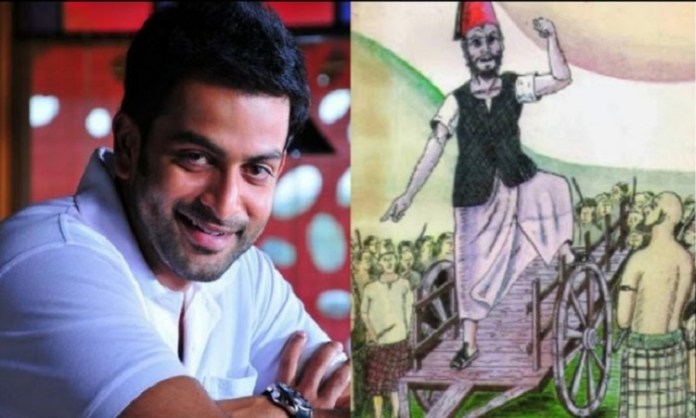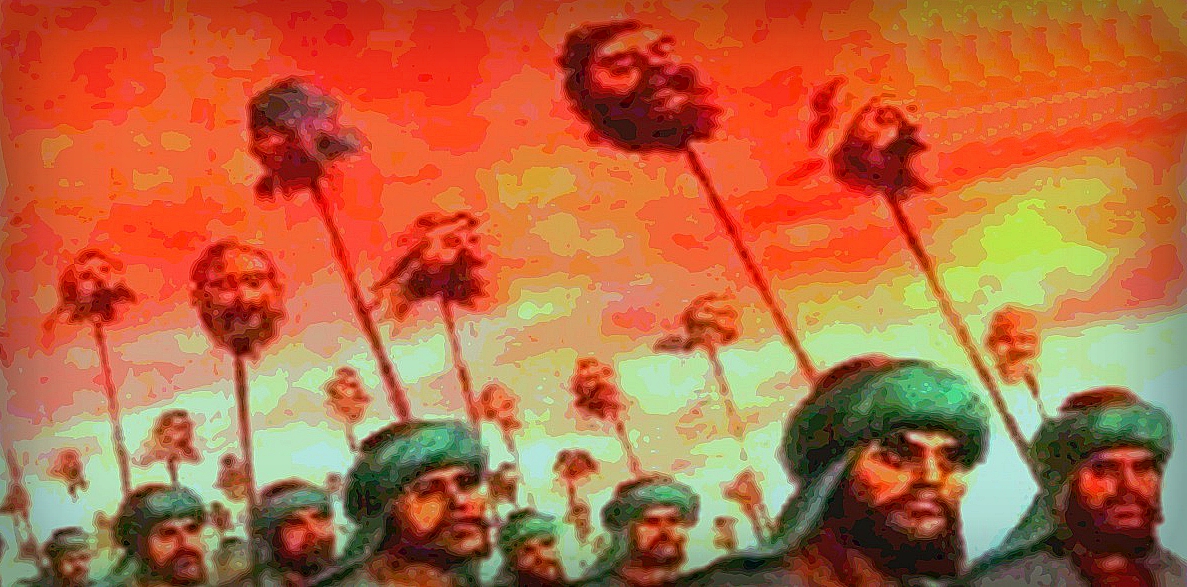“O believers, do not treat your fathers and mothers as your friends if they prefer unbelief to belief; whomsoever of you takes them for friends, they are evil-doers.” (The Quran; Repentance IX: 20)
For a believer, Nobel laureate VS Naipaul says, Islam “can become a neurosis”. The numerous instances of savagery that played out during the Mappila Rebellion (Malabar Rebellion) in 1921-22 prove this observation is not off the mark. For instance, the heart-rending story of a Good Samaritan who was slain by his adopted Muslim son forces us to think about the debasement the religion can bring about in an ordinary individual. The story goes like this: The man who belonged to an aristocratic family, brought up an orphaned Muslim boy upon whom he had showered all his love and affection. The boy used to call him ‘father’.

By the end of the year 1921, the Mappila Rebellion had reached its crescendo. Massacre and atrocities against Hindus had become the order of the day. For the rebels, killing a “kaffar” or raping a Hindu woman or a child or burning a temple had become a religious duty. There was fear in the air. But the poor man thought he would be safe as he had many Muslims as his servants. One night Mappila rebels stormed his house. They searched the entire house but could not locate him. In this context, the boy called his ‘father’ to come out. Feeling reassured, the man appeared on the scene. When the rebels ventured to kill him, the boy declared:
“Nobody should touch him, I will behead my father.”
And without any qualms, the boy cut the old man’s throat.
Puzhikkal Narayanan Nair of Nannambra, too, had faced somewhat similar ordeal after his trusted Muslim servants betrayed him. Mappila rebels looted his house, carried off one of the girls and a boy and put to death other seven members of the family. Narayanan Nair made a miraculous escape. The minor girl was rescued from the captivity after six weeks of torture and rape.
The savagery and brutalities committed by Mappila-Muslim rebels against innocent Hindus during the Malabar Rebellion in 1921-22 might embarrass even the most inhuman Islamic State cadres of today.
The most unfortunate part of the Malabar saga is that while the perpetrators are being celebrated as freedom fighters getting pensions and other facilities from both Kerala and Central governments, Hindu victims and their kin are left to fend for themselves. Adding insult to injury, Marxist historians, in a bid to co-opt Mappilas, have painted Hindu victims as ‘collaborators of imperialists’.

The Malabar holocaust doesn’t have many parallels in the history of India in terms of its magnitude and ferocity. It was, in fact, a culmination of a series of minor communal outbreaks, which used to take place almost regularly ever since Tippu launched military raids to convert Kerala into an Islamic country in the 18th century. According to an estimate, 5,000 Hindus perished and over 30,000 people were forcefully converted during the six months of murder and mayhem. The official figures of forceful conversions are, as usual, much less. In her book The Future Of Indian Politics: A Contribution To The Understanding Of Present-Day Problems, Annie Besant notes: “They murdered and plundered abundantly, and killed or drove away all Hindus who would not apostatize. Somewhere about a lakh of people were driven from their homes with nothing but the clothes they had on, stripped of everything.”
Excerpts from a memorandum submitted by the women victims to Lady Reading would give a clear picture of what had happened during the rebellion.
“….it is possible that Your Ladyship is not fully apprised of all the horrors and atrocities perpetrated by the fiendish rebels; of the many wells and tanks filled with the mutilated but often only half-dead bodies of our dearest and nearest ones who refused to abandon the faith of our fathers; of pregnant women cut to pieces and left on the roadside and in the jungles, with the unborn babe protruding from the mangled corpse; of our innocent and helpless children torn from our arms and done to death before our eyes and of our husbands and fathers tortured, tortured and burnt alive; of our helpless sisters forcibly carried away from the midst of kith and kin and subjected to every shame and outrage which the vile and brutal imagination of these inhuman hell hounds could conceive of; of thousands of our homesteads reduced to cinder mounds out of sheer savagery and a wanton spirit of destruction; of our places of worship desecrated and destroyed and of the images of deity shamefully insulted by putting the entrails of slaughtered cows where flower garlands used to lie, or else smashed to pieces; of the wholesale looting of hard-earned wealth of generations…….. These are not fables.”
The Khilafat Movement: Gandhiji’s failed gamble
Mahatma Gandhi took up the Khilafat cause in 1921 hoping that it would bring about a change in the mindset of Muslims towards cow. He states: “I yield to none in my regard for cow. I have made the Khilafat cause my own, because I see that through its preservation full protection can be secured for the cow.” Belying his sublime hopes, the bestial Mappilas stole cows from Hindu houses, slaughtered them and fed the meat to the forcefully converted Hindus.
A large section of the Congress, including Muhammad Ali Jinnah, staunchly opposed Gandhiji’s plan and warned against bringing “unwholesome” elements into politics. Yasser Latif Hamdani, Lahore-based author, in his book Mr Jinnah: Myth and Reality, writes, “In his passion to rouse masses, Gandhi lost all control and balance. Ultimately — as Jinnah had warned — the movement fell flat on its face and Gandhi — along with the Khilafists — was utterly humiliated but not releasing the genie of identity politics in South Asia.”
With the Congress taking up the Khilafat cause, Muslims in large numbers joined the organisation. Initially there was bonhomie between Hindus and Muslims. But slowly the things started taking a communal turn. The Congress’ call for non-violent means of protest had no effect on Muslims, who started amassing weapons and targeting Hindus. In The Moplah Rebellion, C Gopalan Nair writes: “The Hindu believed in Hindu-Muslim unity and never dreamed of a day when the Muslim would turn against him; the Moplah had no such delusion; he wanted Muslim swaraj; he worked for it; he was ready for a general rising and bided him time. (sic)” Incensed by the arrest of the Khilafat leader Ali Musaliar and the rumour that the Mambaram mosque was razed to the ground by the British, the Mappilas went on a rampage and killed Hindu men, women and children. Violence erupted in areas where Muslims had considerable presence.

Avokker Musaliar, a Khilafat chieftain, led a huge contingent of rebels who indulged in manslaughter and forceful conversion of hundreds of Hindus. He usurped a Nambuthiri illom and conducted a sharia court. Scores of Hindus were brought before him from villages, some with their families. Invariably they were given two options: convert or face the music. Circumcision was performed promptly on men who accepted Islam while others were taken to a shrine attached to the illom and beheaded and their bodies were thrown into a well. About 60 bodies were recovered from the well later.
Chembrassery Imbichi Koya Tangal was another beast in human form who spearheaded mass murders and forceful conversion. “More than 40 Hindus were taken to the Tangal with their hands tied behind their back, charged with the crime of helping military by supplying them with milk, tender coconuts, etc., and 38 of these Hindus were condemned to death. …Thirty eight men were murdered, one of whom a pensioned Head Constable to whom he owned a grudge had his head neatly divided into two halves.” (The Moplah Rebellion)
A report published in Madras Mail (dated October 4, 1921) reads: “Several recent reports show that between Variankunnath Kunhammad Haji and the Chembraasseri Tangal, it has been decided that all Hindus residing in villages at the mercy of rebel bands, should be put to death unless they accept Islam. Instances are mentioned in which Hindus had actually been forced to dig their own graves before being butchered. It is also reported that diabolical reprisals are being perpetrated against all persons known or suspected of supplying provisions to the military and police, one report stating that the Chembrasseri Tangal had ordered a Hindu to be flayed alive for supplying troops with milk. In villages like Melattur, Melmuri, Karuvarakundu and Toovur, extermination of the Hindu population is being systematically carried on, but young women and girls who find favour with rebels are forcibly carried away.”
A report prepared on the atrocities committed on Hindus mentions about an incident where ‘a pregnant woman carrying 7 months was cut through the abdomen by a rebel and she was lying dead on the way with the dead child projecting out of the womb’. “Another, a baby of six months was snatched away from the breast of its own mother and cut into pieces.”
Annie Besant was a staunch critic of Khilafat. She writes, “Malabar has taught us what Islamic rule still means, and we do not want to see another specimen of the Khilafat Raj in India.”


















Discussion about this post